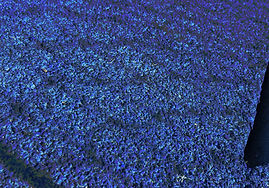Hilario De La Rosa
"THE DETAILS ARE
NOT THE DETAILS.
THEY MAKE
THE DESIGN."
CHARLES EAMES
PRINCIPLES OF DESIGN
The principles of design are concepts used to organize or arrange the structural elements of design. Again, the way in which these principles are applied affects the expressive content, or the message of the work.


Rhythum: A strong, regular, repeated pattern of movement or sound.
EXPLAINING ASYMMETRY:The above image is asymmetrical because when you divide the image in half, in any direction, it does not reflect the other side. Asymmetry is one type of the principle of design, BALANCE.

EXPLAINING SYMMETRY:The above image is an example of symmetry. Apart from the text, "Symmetry", the image can be divided vertically and horizontally. When split in half, the image on one side reflects the other side like a mirror. Symmetry is one type of the principle of design, BALANCE.


EXPLAINING RADIAL SYMMETRY: RADIAL SYMMETRY is created when a design is rotated around an axis. In the images above, you can see the central design is 4 photos of a piece of architecture rotated on a central axis point. This design is then repeated throughout the picture plane.


Balance:The distribution of visual weight within a composition. It is the way in which the elements in visual arts are arranged to create a feeling of equilibrium in a work of art. The three types of balance are symmetry, asymmetry, and radial.
EMPHASIS: Also called focal point, this is a compositional strategy where the artist creates an area that pulls the viewer’s eye toward an important part of the image.
VARIETY: The combining visual elements to achieve intricate and complex relationships. It is a technique used by artists who wish to increase the visual interest of their work.
REPETITION: The repeating of a visual element of the design to relate the parts to one another. It is one way to add Unity to a piece of artwork. By repeating an object within a composition your can create a sense of whole to the overall piece.
RHYTHM: Intentional, regular repetition of lines of shapes to achieve a specific repetitious effect or pattern.
UNITY/HARMONY: The principle of design that combines elements in a work of art to emphasize the similarities of separate but related parts.
MOVEMENT: Movement refers the the arrangement of elements throughout the picture plane that forces your eye to move around the image. This principle does not refer to simulating movement of an object within the photograph, painting or drawing.
PROPORTION: The size relationship between 1 part of an image to another part of the image, or the relationship between 1 part of the image to the whole image.
Movement: An act of changing physical location or position or of having this changed.
Proportion: A part, share, or number considered in comparative relation to a whole.